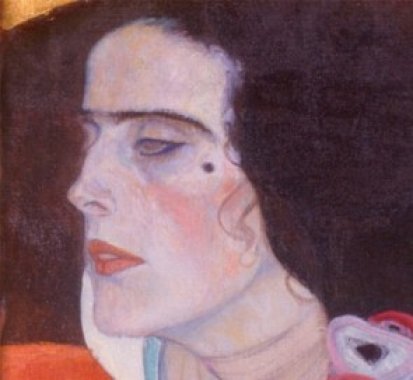After a century of his acclaimed participation at the Venice Biennale (1910), Gustav Klimt returns to the lagoon as the protagonist of a remarkable exhibition to be held in the rooms of the Museo Correr. A glorious occasion to celebrate the 150th anniversary of the artist’s birth (1862-2012), the exhibition is a joint production of the Fondazione Musei Civici di Venezia and the Belvedere Museum of Vienna, in collaboration with 24 ORE Cultura – Gruppo 24 ORE and Arthemisia Group. The curator of the exhibition is Alfreid Weidinger, one of the leading experts on the Austrian artist.
Gustav Klimt in the Sign of Hoffmann and the Secession – the title chosen for the Venetian event – will display an exceptional cycle of paintings, rare and precious drawings, furniture and elegant jewelry, but also elaborate reconstructions and interesting historical documents, whose purpose is to introduce the visitor to the genesis and evolution, in both architecture and painting, of Klimt’s work and of those who gave rise to the Viennese Secession, an instance of that European Modernism that witnessed among its key players such figures as Minne, Jan Toorop, Fernand Khnopff, Koloman Moser, and above all the companion of many intellectual ventures and projects, Josef Hoffmann.
Precisely his collaboration with Josef Hoffmann, architect and interior designer, whom Klimt met in Vienna while the first buds of the Sacred Spring were blooming, is one of the main themes of the exhibition, which seeks to show how in a very short time these two remarkable figures, the artist and the architect, were capable of sharing commissions, clients, friends; but above all, it reveals their spasmodic tension towards the Gesamtkunstwerk, that is, “the total work of art”. The highest point of the utopian realization of this concept can be seen in the Beethoven Frieze (1901-1902) and in the decorations for Brussels’ Stoclet Palace, both of which will be showcased at the Venice exhibition.
The exhibition thus tells the story of the fertile liaison between these Pioneers of the Modern, for whom architecture, painting and the applied arts were combined and became inseparable from one another.
On display in the rooms of the Correr, alongside the cycles mentioned above, will be the Judith I (1901) and the Judith II (1909), together for the first time, which were acquired at the 1910 Biennale for the Galleria Nazionale Moderna di Ca’ Pesaro, alongside some of the masterpieces from the Vienna Belvedere, the institution owning the largest collection of Klimt’s oils on canvas, and others from public and private collections, including the Lady by the Fireplace (1897/98), Lovers (1901/1902), Portrait of Hermine Gallia (1904), The Sunflower (1907).
As a testimony to the scope of Klimt’s influence on Italian figurative culture of the time, the great decorative cycle of Vittorio Zecchin, One Thousand and One Nights, and the equally outstanding Spring by Galileo Chini, on loan from the Galleria Nazionale d’Arte Moderna in Rome, will be shown in the rooms of Ca’ Pesaro (31 March – 8 July), thus serving as a corollary to the exhibition at the Correr, and telling the story of this visionary elective affinity.
The catalogue is published by 24 ORE Cultura.

